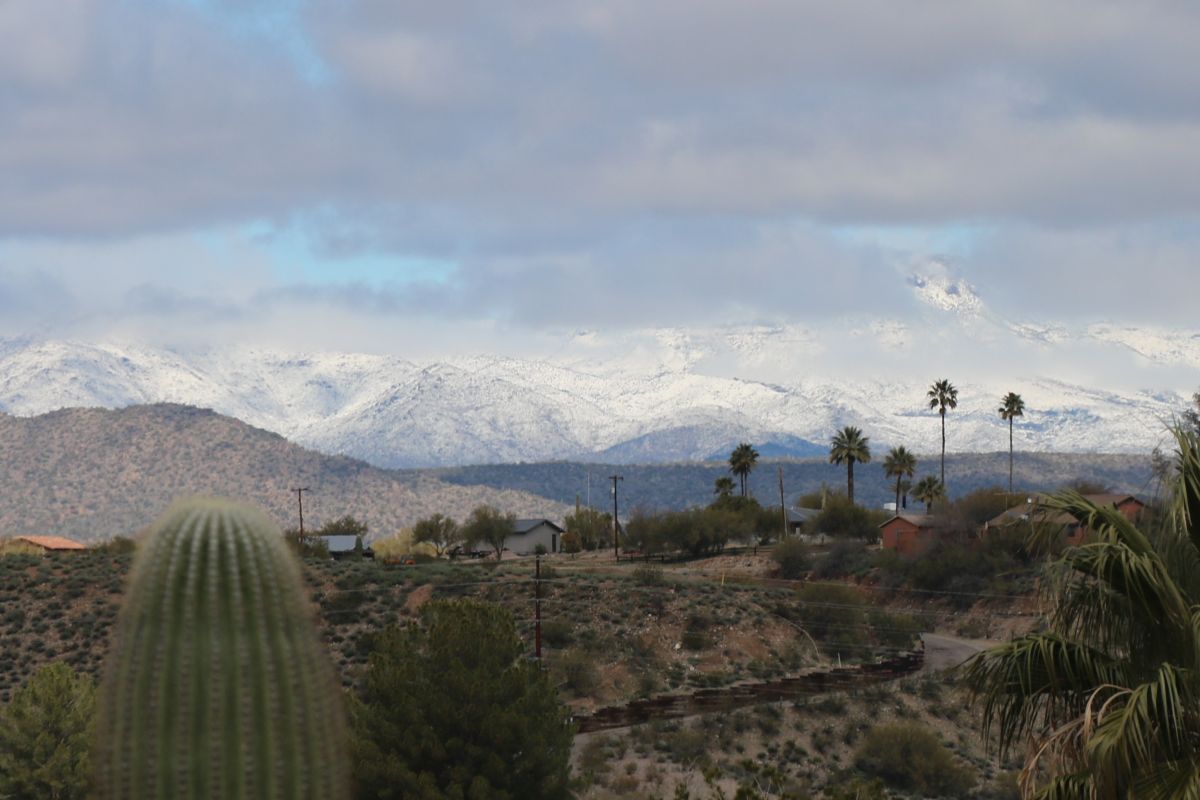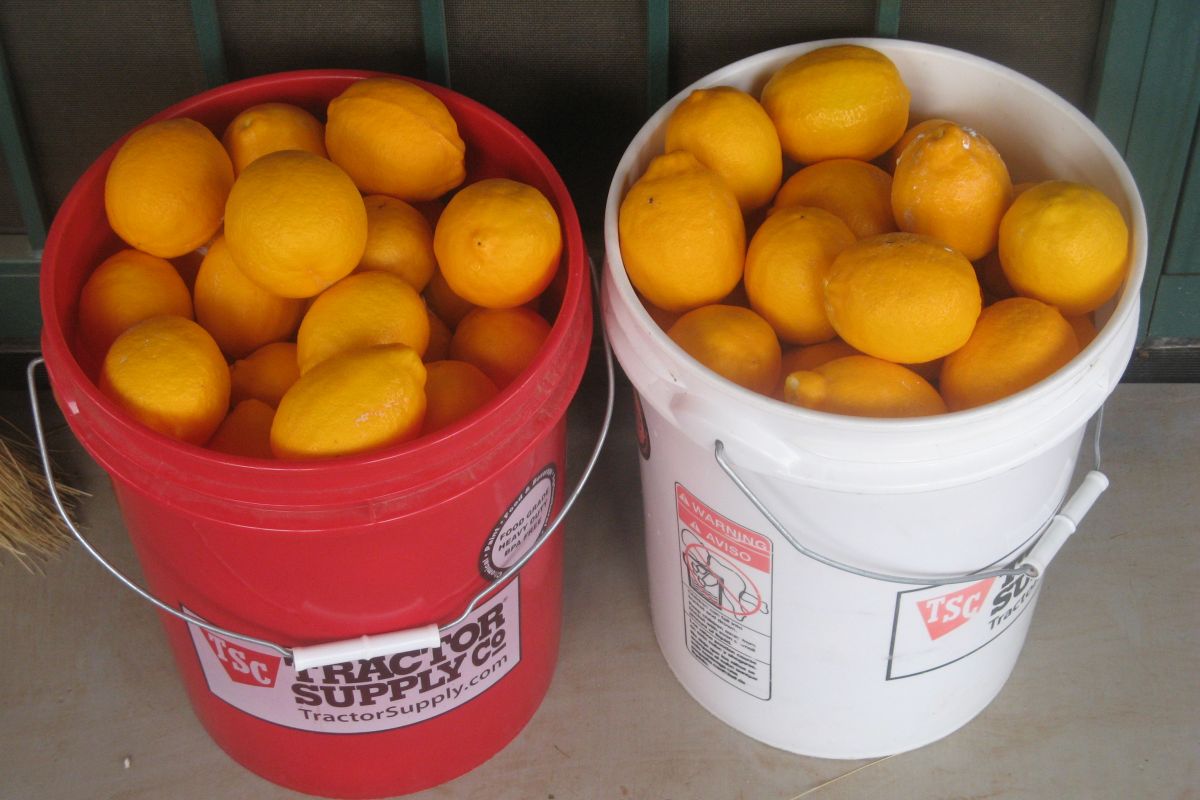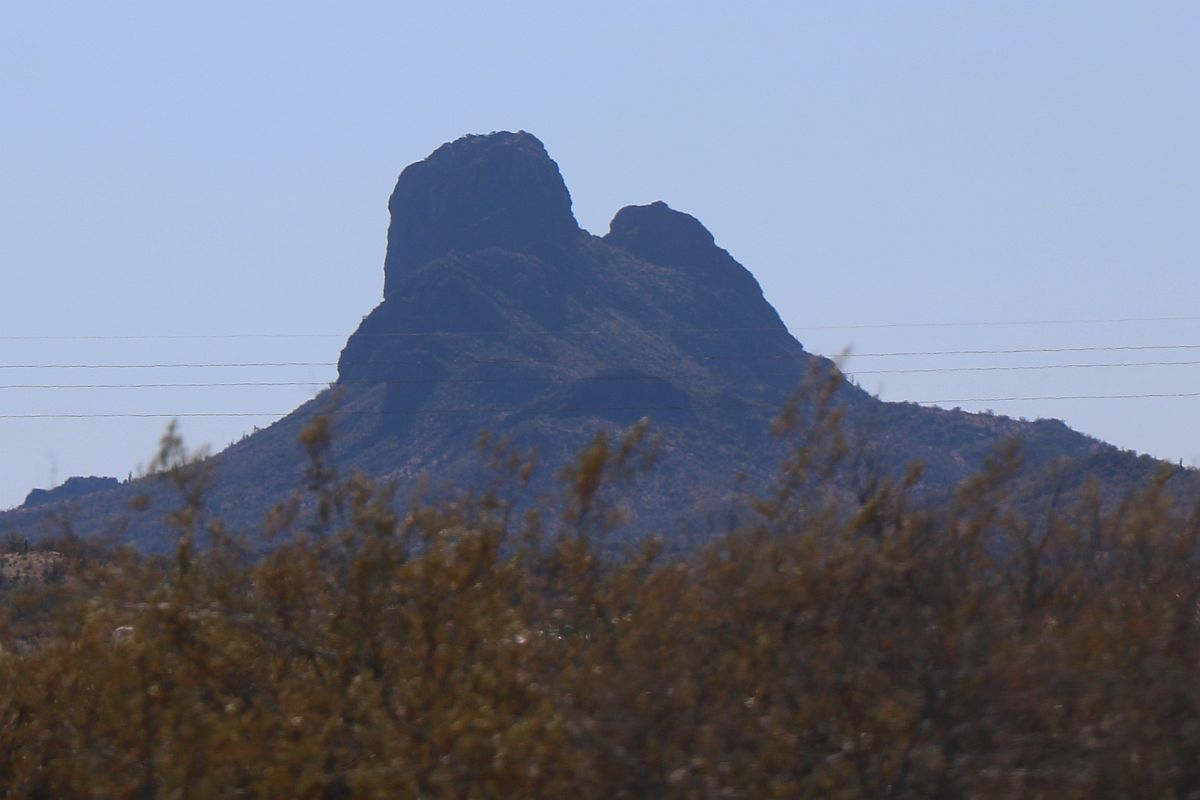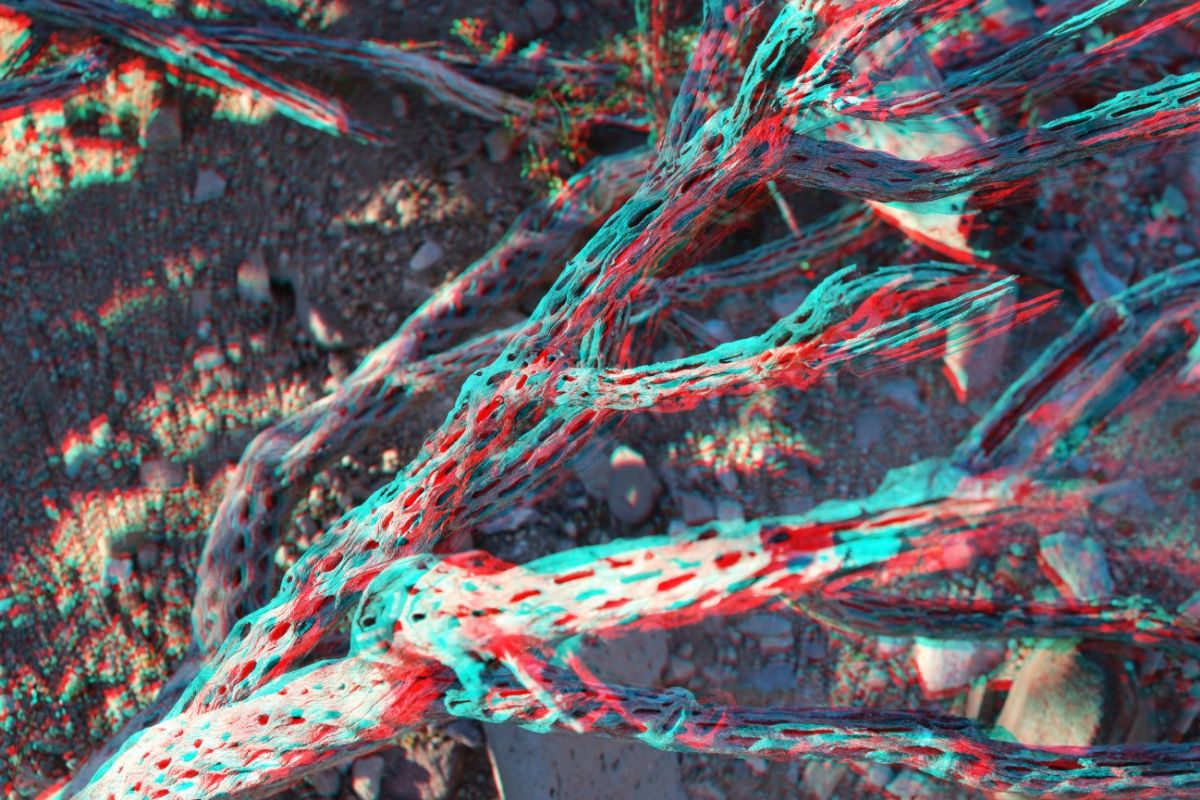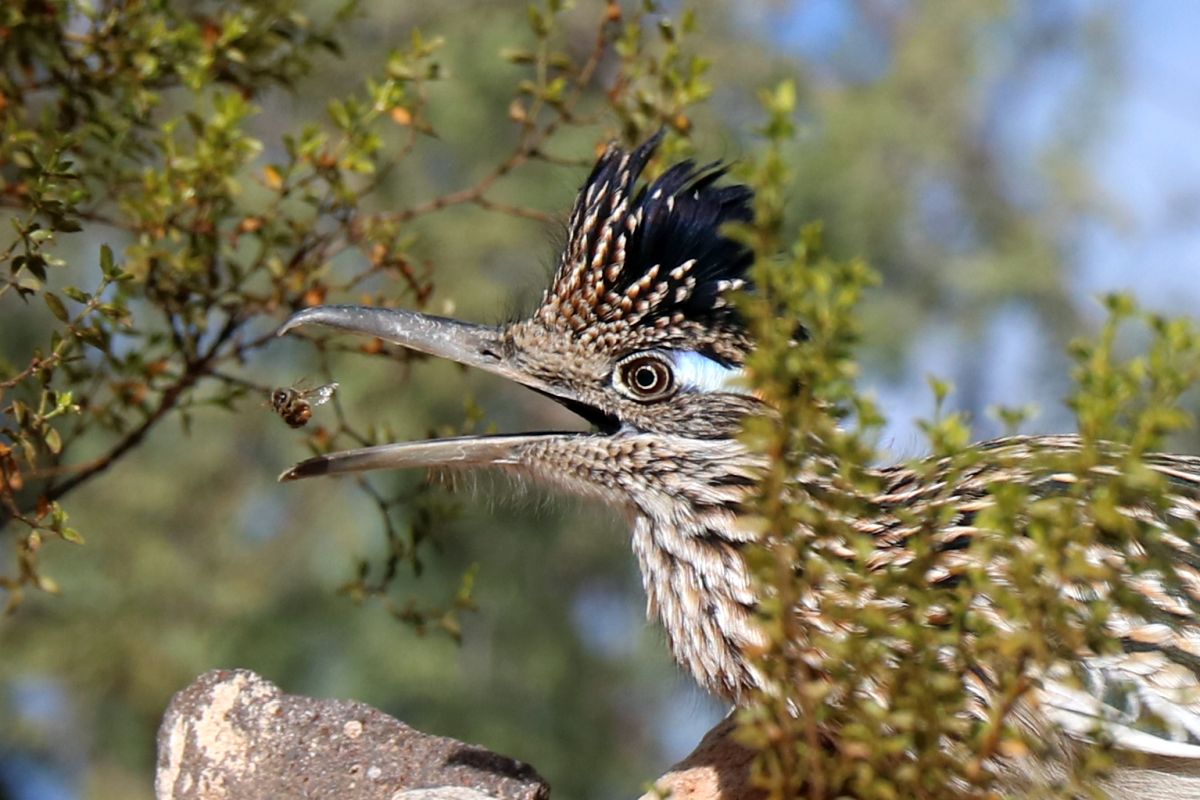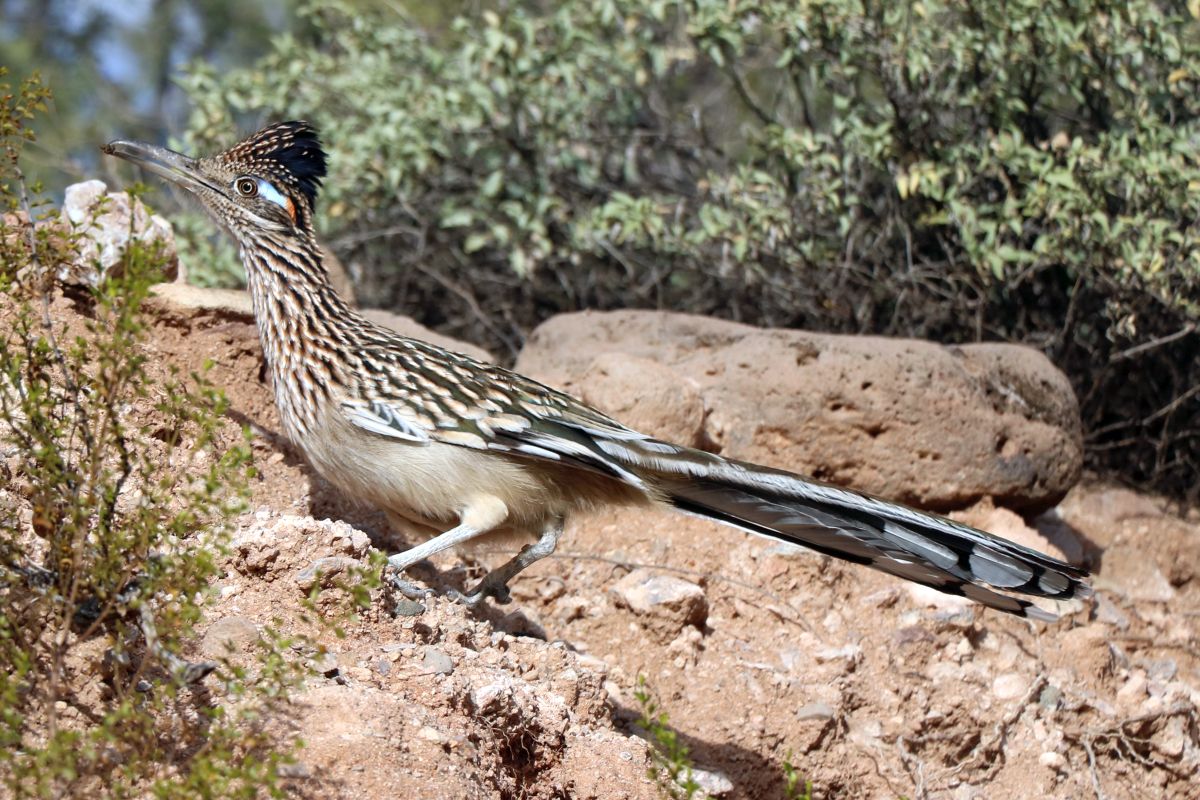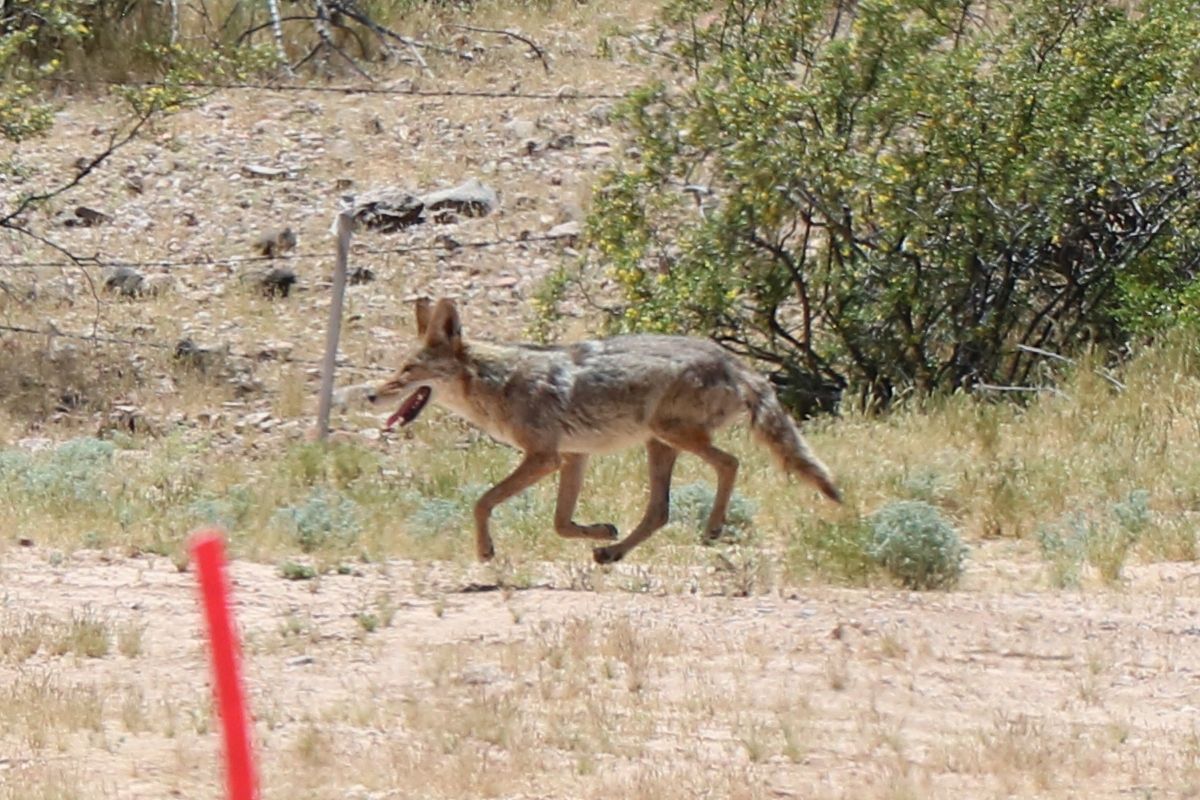
Above — Coyote image taken in April 2020 just northwest of our house. Click on the image to enlarge.
About a week ago when taking the dogs out for their morning walk, I observed a coyote walking across the neighbor’s driveway, about 50 to 70 yards west of our property line. The coyote didn’t seem to notice us at the time and the dogs didn’t notice the coyote. I mentally wrote the sighting off as a random indigenous desert animal just passing through the area. No harm, no foul. The dogs did their business and we went back inside the house.
Then, a couple of days later, I saw what appeared to be the same coyote walking across the same driveway at roughly the same spot at the same time as before. That made me think that the coyote might possibly have taken up the desert area west of here as it’s territory.
Even though there are houses in the area, much of the original natural desert remains which still provides habitat to the critters here including cottontail rabbits, jackrabbits, Gambel’s quail, antelope ground squirrels, roadrunners, javelina, mule deer and a myriad of other wildlife. The desert also has it’s predators such as hawks, rattlesnakes and coyotes. We have heard about, but have not yet seen, instances of bears and cougars around town.
So, this morning while walking the dogs, we saw the coyote to the west as before, only this time, we noticed each other. It stood and stared at me, still 50 yards away, and I watched it as I removed the dogs to the east in the opposite direction. The dogs still did not notice the coyote. We went back in the house after the morning business without any further wildlife encounters.
Later in the day today, we saw the coyote again hanging around the same area as before. It is still noticing us, but does not seem to be interested in approaching us. We will make updates to this post if anything further develops.
UPDATE — 12/05/2022: Apparently, the individual coyote has moved on since it has not been seen in a week’s time. It could still be out there, but we have not seen it since posting this item.

